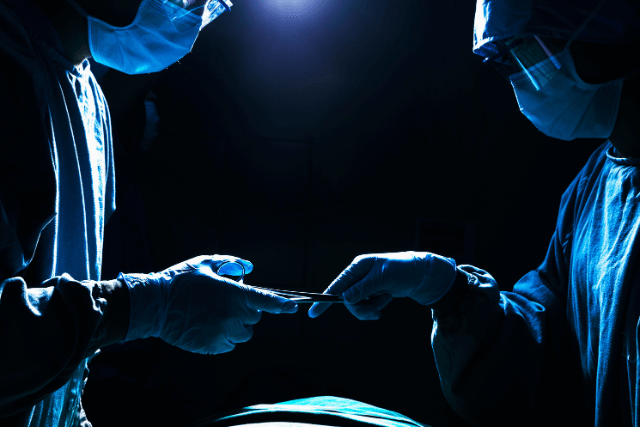When it comes to anal fissure vs. fistula, many people struggle to understand the differences between the two, as both conditions affect the anal region and share certain symptoms, such as pain and discomfort. Despite these similarities, anal fissures and anal fistulas are two entirely distinct medical conditions. Each requires different approaches for diagnosis and treatment. To help you understand these conditions more clearly, this blog will examine the key differences between anal fissure vs. fistula, how they develop, and what treatments are available. Additionally, we will highlight the advanced Fistula-tract Laser Closure (FiLaC®) procedure for treating anal fistulas.
Understanding Anal Fissures
Let’s begin by defining what an anal fissure is and how it develops. An anal fissure is essentially a small tear or crack in the skin around the anus. It’s a painful condition that can occur when the skin in the anal area is stretched too far, often as a result of passing large or hard stools. While anal fissures may sound trivial, they can be quite painful and often cause discomfort during bowel movements.
Common Symptoms of an Anal Fissure
The symptoms of an anal fissure are fairly straightforward and usually involve:
- Sharp pain during or after bowel movements, which is often described as a “stabbing” sensation.
- Bleeding: Small amounts of bright red blood can appear on the stool or on toilet paper.
- Itching or irritation: This occurs in and around the affected area, leading to discomfort.
- A visible crack: In some cases, the fissure can be seen as a tear in the skin.
For many individuals, the pain can be intense, and although it usually subsides after a bowel movement, it may return with subsequent bowel movements, causing considerable distress.
Causes of Anal Fissures
The primary causes of anal fissures include:
- Passing hard or large stools: This is the most common cause of an anal fissure, as it requires the anal muscles to stretch more than usual.
- Chronic diarrhea: Frequent, loose stools can irritate and tear the delicate skin in the anal region.
- Childbirth: Women who have recently given birth may experience anal fissures due to the pressure during labor.
- Anal trauma: Any form of injury to the anal region can lead to the formation of fissures.
It is worth noting that while anal fissures are often temporary and can heal with appropriate care, they can sometimes become chronic and require more significant intervention.
Understanding Anal Fistulas
An anal fistula, on the other hand, is an entirely different condition. It is characterized by a small tunnel or passage that forms between the inside of the anus or rectum and the skin around the anus. The formation of an anal fistula often follows an infection of the anal glands, which leads to the development of an abscess. If the abscess is not treated properly, it can turn into a fistula.
Common Symptoms of an Anal Fistula
The symptoms of an anal fistula are more persistent and can vary in severity. They include:
- Chronic pain and discomfort: Unlike the pain associated with anal fissures, the pain from an anal fistula tends to persist, especially when sitting or during bowel movements.
- Swelling or lumps near the anus: A noticeable swelling or a lump can form around the anus as the fistula develops.
- Discharge of pus or blood: The most distinctive feature of an anal fistula is the discharge, which often consists of pus or blood leaking from the anus. This can be both uncomfortable and embarrassing.
- Itching or irritation: The presence of the fistula and the discharge can cause significant irritation and itching around the anus.
Causes of Anal Fistulas
The most common cause of anal fistulas is an infection in the anal glands. Other possible causes include:
- Crohn’s disease: An inflammatory bowel disease that can cause fistulas to form in the anal region.
- Trauma or injury: Any injury to the anal area, such as from surgery or an accident, can lead to the formation of a fistula.
- Previous surgeries: Fistulas can develop after certain surgical procedures near the anus or rectum.
- Cancer: Though rare, cancer in the rectal or anal area can lead to the formation of a fistula.
Treatment of Anal Fistulas
Unlike anal fissures, which often heal on their own, anal fistulas usually require medical treatment. The goal is to remove or close the fistula while minimizing damage to the surrounding tissue. One of the most advanced treatments for anal fistulas is Fistula-tract Laser Closure (FiLaC®).
What Is Fistula-tract Laser Closure (FiLaC®)?
Fistula-tract Laser Closure (FiLaC®) is a revolutionary, minimally invasive procedure that has significantly improved the treatment of anal fistulas. It involves the use of a laser to close the fistula tract. The procedure has several advantages over traditional surgical methods, making it a preferred option for many patients.
Advantages of FiLaC®
- Minimal Pain: Since it is a minimally invasive procedure, patients report experiencing less pain compared to conventional fistula surgeries.
- Quick Recovery: One of the major benefits of FiLaC® is the relatively short recovery time. Most patients can return to their daily activities within a few days after the procedure.
- Lower Risk of Recurrence: Studies have shown that FiLaC® has a high success rate, with a significantly lower chance of the fistula returning after treatment.
Traditional treatments for anal fistulas often require more invasive procedures, such as fistulotomy (where the fistula tract is surgically opened to allow healing) or seton placement (a surgical technique to allow the fistula to drain and heal). These methods, while effective, can be more painful and require longer recovery times.
Key Differences Between Anal Fissures and Fistulas
Now that we’ve looked at both anal fissures and anal fistulas, it’s important to compare them directly. Here are some of the key differences between these two conditions:
Location and Formation:
- Anal fissures are superficial tears in the skin around the anus.
- Anal fistulas are deeper, tunnel-like structures that connect the anal glands to the skin surrounding the anus.
Causes:
- Trauma or pressure, such as passing large or hard stools, typically causes anal fissures.
- Infections in the anal glands or other underlying conditions, such as Crohn’s disease, often cause anal fistulas.
Symptoms:
- Anal fissures cause sharp pain, especially during or after bowel movements, and may result in bleeding.
- Anal fistulas are characterized by chronic pain, discharge of pus or blood, and swelling.
Treatment:
- Anal fissures can often be treated with lifestyle changes, medications, and minor interventions like Botox injections.
- Anal fistulas require surgical intervention, with FiLaC® offering a modern, minimally invasive treatment option.
Prevention of Anal Fissures and Fistulas
Preventing anal fissures vs. fistula involves maintaining good anal and digestive health. Here are some simple tips for prevention:
- Increase Fiber Intake: A diet high in fiber helps keep stools soft and easier to pass, which reduces the risk of both anal fissures and anal fistulas.
- Stay Hydrated: Drinking plenty of water prevents constipation and helps maintain smooth bowel movements.
- Exercise Regularly: Regular physical activity can help prevent constipation and promote healthy bowel function.
- Avoid Straining: Straining during bowel movements can increase pressure on the anal area, leading to both anal fissures and anal fistulas.
- Practice Good Hygiene: Proper cleaning after bowel movements helps reduce the risk of infections and irritation around the anus.
Conclusion
In conclusion, while anal fissure vs. fistula share some common symptoms such as pain and discomfort in the anal region, they are fundamentally different in terms of their causes, symptoms, and treatments. Anal fissures are typically superficial and often heal on their own, while anal fistulas are deeper and require surgical intervention for proper healing. Fistula-tract Laser Closure (FiLaC®) is a modern and effective treatment for anal fistulas, offering patients a minimally invasive option with minimal pain and quick recovery times.
If you experience any symptoms of either condition, it’s crucial to consult a healthcare professional for an accurate diagnosis and appropriate treatment. Whether it’s anal fissure vs. fistula, timely medical attention can help you find relief and prevent further complications.










